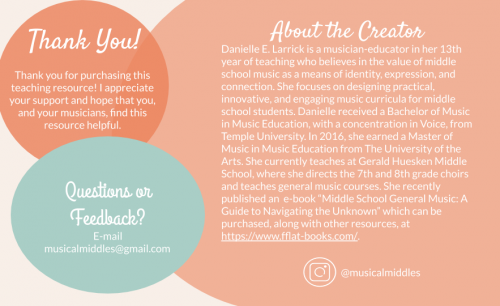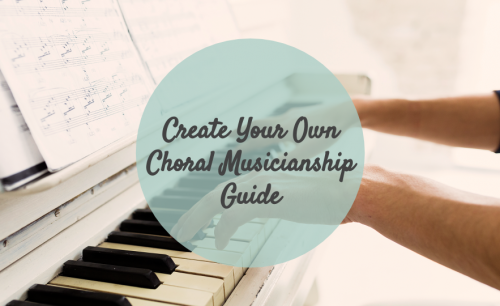Like most music educators, I spend my summers reflecting and dreaming of what I want to accomplish with my students throughout the upcoming year. This past summer I set the intention of creating and fostering more musicianship in my choirs. Sure, this was always something I incorporated to some extent, but I knew there was more to be done. I constantly tell my singers that I want them to become independent musicians, but how was I to do so with so many constraints? Hurdles such as limited time, concert preparation, and other variables always seemed to take center-stage and prevent me from making musicianship a focal point of my rehearsals.
A change in priority
After attending a few inspiring sessions at the Pennsylvania Music Educators Summer Conference, I felt motivated to truly change the way I taught my choirs. I began studying my holiday repertoire and picking it apart with a fine-tooth comb. I analyzed the various rhythmic and tonal patterns, looking for similarities and differences. I searched for potential trouble spots and symbols and terms that would be new to my younger singers. I began notating these, slowly but surely, and compiling them into a workable musicianship guide for my students.
As the school year started I anticipated I might be met with some apprehension from my singers, especially for those that had me the previous year. Our earliest rehearsals were not spent in the choral octavos themselves, but in their musicianship guides learning the tonal and rhythmic patterns. While the singers explored this new process, I had my own fears. I was used to hitting the ground running, visualizing the calendar in the back of my mind and knowing how quickly those rehearsals before our first concert fly by. I decided to trust the process. Over the next few rehearsals, I came to the realization that my singers were changing. Their retention of parts was much improved. Their overall sound was stronger. And, after talking to them and getting some feedback, they said they felt more confident. They were not only learning the music they were singing, they were learning music.
Looking ahead
As we approach the season of selecting Spring repertoire and continuing the learning process with these new pieces, I am excited to continue tweaking my approach to musicianship guides and incorporating them into my choral rehearsal. And, I’m happy to be able to share my experience with all of you! I encourage you to try creating a musicianship guide of your own, even if it’s for only one piece! If you want to learn more about how to make this happen, feel free to check out my slideshow with step-by-step tutorials.
How about you? Have you used musicianship guides in the past? I’d love to hear about your experience with them and any advice you’d have for a teacher looking to create their own!






I signed up for your email subscription and my FREE download of your “Balancing Work/Life” book flashed on the screen for only a split second. Please share the link with me in email.
Hi, Holly! Please email [email protected] and we will send you your copy!